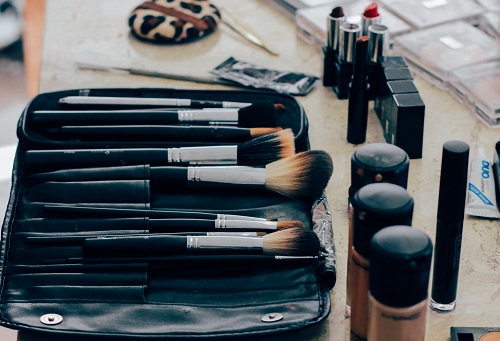Navigate quickly
Beauty Industry Analysis 2020 - Cost & Trends

Introduction
At first blush, the beauty industry could be thought to cater only to the glamorous, or perhaps the vain, or maybe just those in the spotlight. And it does - along with everyone else! The industry is built on the product and services that help us look our best - whatever that best may be.
It’s more diverse than you think and it’s certainly not just the makeup, hair color and perfume - it’s also the deodorant, toothpaste and even the ear hair clippers. It’s not just the salons - it’s the barber shops, waxing franchises, massage franchises and a whole lot more.
It is every product and service dedicated to helping us look - and smell - the way we want, or the way we believe we should for professional reasons. And our definition of beauty is malleable and ever changing - providing never ending opportunities for the industry to innovate.
Historically trends were driven by celebrity taste-makers through their personal choices or professional endorsements. Think of Jackie Kennedy’s salmon suits, or more recently the “Rachel” - a hairstyle phenomenon based on my Friend and yours.
Those days are gone, or nearly so. 82% of women now believe that social media drives these trends. It’s a constant flow of information and opinion from not just trendsetters or celebrities, but from friends and friends of friends and an entire universe of strangers.
But however they are set, there is a large industry ready, willing and able to cater to them. It is resistant to economic downturns and poised for even more growth. For the entrepreneur there are plentiful representative sales opportunities within companies like Avon or Arbonne and many more traditional franchising opportunities providing a slew of services.
Beauty Industry
As it turns out, it takes a lot of effort to keep us looking and smelling our best - an absolute army of products and services, in fact. Cosmetics, skin care, hair styling, hair coloring, hair removal, nail salons, tanning salons, massage parlours and luxury spas, shower and shaving product, perfumes, colognes...and a whole lot more.
And that’s where it starts to get interesting - within each of these segments are products for every different skin tone or texture, allergy, age, hair type or color, sex - even the time of day! It is a level of diversity and nuance that may go unnoticed to the casual observer. Some of us, in fact, are overwhelmed by all those rows of shaving cream.
But increasingly we are the minority - most consumers care, are discerning, and will try a number of different products before finding something that works. Once they find it, however, brand loyalty - whether for a shampoo or a particular salon - is extremely strong.
Producers differentiate themselves through their target demographic markets, price point and with different manufacturing processes. Products that promise no animal testing or that are all natural, for example, have loyal, niche markets and can often charge a premium.
Service providers compete primarily through price, location as well as their target demographic markets. Types of service and the related products that are offered are vital to profitability. Hair salons and barber shops, for example, rely on 5-15% of their revenue from hair care product sales.
Numbers
The beauty industry is known to be resistant to economic downturns - even faring well during the Great Recession of 2008. Though consumers tend to be more price conscious during those times, they do not stop spending. So in today’s environment of rising per capita incomes the beauty business is booming.
In 2015 the industry generated $56.2 billion in the United States. Hair care is the largest segment with 86,000 locations. Skin care is a close second and growing fast, expected to have revenue of almost $11 billion by 2018. This growth is being driven in part by a generally increasing awareness of the importance of skin care, but also specifically due to an increase in the market for men.
| US Beauty Industry Segments | Market Share by Revenue |
| Hair care | 24% |
| Skin care | 23.7% |
| Cosmetics | 14.6% |
| Perfumes and colognes | 9.5% |
| Deodorants, antiperspirant, feminine cleaning | 8.5% |
| Oral hygiene | 5.6% |
| Other | 14.1% |
Employment
According to the Bureau of Labor Statistics, there are nearly one million people employed in the primary service segments of the market, and there are strong growth expectations. Clearly this is an industry on the rise:
- Barbers, hairdressers and cosmetologists: 656,000 in 2014, 10% expected growth by 2024.
- Manicurists and pedicurists: 113,600 in 2014, 10% expected growth by 2024.
- Skincare specialists: 55,000 in 2014 with a 12% expected growth by 2024. Specific growth expected for businesses serving men.
- Massage therapists: 168,800 employed in 2014 with a whopping 22% growth by 2024!
Opportunity
There are a number of trends within the industry that are driving growth and revenue. Chief among them:
- Organic products & products produced in a sustainable (environmentally conscious) manner. Certainly a niche market for many years, but greater availability of information about the benefits - personal or global - are driving increased growth.
- Products and services focused on our aging population. Said plainly - we have a large retired/retiring population, and many of them have money to spend.
- Products and services focused on babies and young children. This is frequently related to the organic/sustainable movement above. In particular, millennial moms are willing to pay a premium to make sure their kids have the proper skin protection. Other franchises such as Cookie Cutters focus on providing an amazing experience for kids - turning a trip to get the tips trimmed into an adventure.
- Men’s product and services - this trend is still relatively new but is expected to drive growth for years to come. Places like the Boardroom Salon claim to provide the ultimate relaxation experience for men while the Hair Saloon and 18/8 Men’s Hair Salon are reinventing the barbershop.And it is just the tip of the iceberg.It is estimated that 75% of men are not using any sort of facial skin care, but interest continues to grow.
As mentioned above, it’s important to remember that many beauty franchises derive up to 15% of their revenue from product sales; putting the right product on the shelves can make or break a business. Some manufacturers have a franchising distribution system of their own and even offer training programs, or partner with a particular service provider.
With strong and growing demand, employment estimates through the roof to meet that demand and a strong history of being a steady business even in turbulent times, the beauty industry continues to provide fantastic opportunities.
You can see beauty franchises expanding in your area here.
Matt Sena is a writer and researcher, a co-founder, a former portfolio manager, a rider and a dad. He earned his MBA in Finance from Kellstadt Graduate School of Business while working at Goldman, Sachs & Co.
Ultimate franchising guide
All you need to know as a first time franchisee: Step by step guidance from experienced franchise professionals.

















